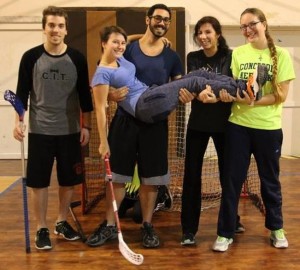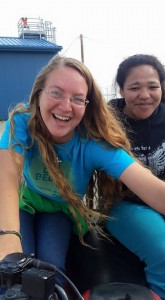Evanjeliké Gymnásium Tisovec (EGT or Lutheran High School) in Slovakia
I did my student teaching II here in the fall of 2015. I lead Bible Studies and participated in many after-school activities as well as teaching English, Religion, and Literature. Being immersed in their culture was a unique perspective for me, just having helped people who were immersed in American culture. For more information, see the blog I kept while I was there!
Lincoln High School in Nebraska
I did my student teaching I here, teaching ELL, as well as some teacher aiding beforehand, throughout 2015. All of my students were recent immigrants/refugees to the United States. They came from Iraq, Burma, Thailand, Mexico, Guatemala, El Salvador, the Congo, and many more cou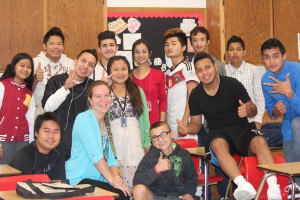 ntries. Building relationships was hard, as we didn’t have as much in common, but I just worked harder to find what we did! It was the best way to motivate students who were worried about work, deportation, and many other things besides school. To see a unit I taught in this classroom, click here.
ntries. Building relationships was hard, as we didn’t have as much in common, but I just worked harder to find what we did! It was the best way to motivate students who were worried about work, deportation, and many other things besides school. To see a unit I taught in this classroom, click here.
Akiachak, Alaska
In this native Yup’ik village, I helped lead VBS and games during the summers of 2014-2015. Many of the people there have such hope and trust in God, it amazes me. They live off the land (and water) and trust God to provide food even when they aren’t catching the fish they normally do.
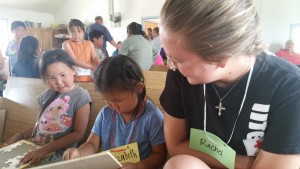
Derby High School in Kansas
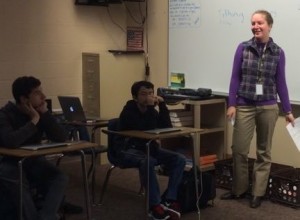 I taught my capstone here in a 9th grade English class in Nov. 2014. Although it was a regular English class, half of the students were ELLs. To see more about how I managed this, click here.
I taught my capstone here in a 9th grade English class in Nov. 2014. Although it was a regular English class, half of the students were ELLs. To see more about how I managed this, click here.
Hong Kong, China
I taught English and lessons about Jesus in Lui Cheung Kwong and Sui Leun Lutheran Primary Schools in May 2012. I was looking forward to conversing with the children. 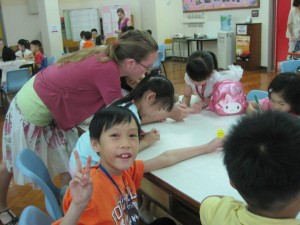 They had been taught English in school, so I figured they would be just as eager to talk to me as I was to talk to them. The students greeted us with bright, shining faces that next morning. At recess, I tried starting a conversation with one of the students, but he remained silent until I asked how he was, and then he replied “IAMFINETHANKYOU.”
They had been taught English in school, so I figured they would be just as eager to talk to me as I was to talk to them. The students greeted us with bright, shining faces that next morning. At recess, I tried starting a conversation with one of the students, but he remained silent until I asked how he was, and then he replied “IAMFINETHANKYOU.”
This conversation was to be repeated throughout our time there, and it wasn’t due to just the students’ lack of English. Hong Kong has a very high context culture, as described in the Cultural Lens Theory. The students there took it 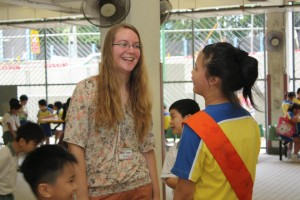 upon themselves to understand everything we were saying, and if they didn’t, they thought it was their fault. I would be rattling off words, assuming they followed me, and never realizing they weren’t until I asked a question and was met with blank stares. The students didn’t want to let us know when they couldn’t understand because they felt like they were failing us personally. They were also hesitant to form their own sentences beyond the phrases they had been taught because they did not want to a make a mistake and lose face with these very important American visitors.
upon themselves to understand everything we were saying, and if they didn’t, they thought it was their fault. I would be rattling off words, assuming they followed me, and never realizing they weren’t until I asked a question and was met with blank stares. The students didn’t want to let us know when they couldn’t understand because they felt like they were failing us personally. They were also hesitant to form their own sentences beyond the phrases they had been taught because they did not want to a make a mistake and lose face with these very important American visitors.
 When working with students and parents in the future, I should not assume that just because they don’t say much doesn’t mean they don’t respect or like me. I also should not assume that students understand me, but have a system for them to easily, discreetly signal that they don’t understand a certain word, perhaps holding up a yellow card to show confusion, red for being completely lost, and green for being right with me. My whole goal is to provide an equal classroom experience, and if some students understand what I’m saying, and some don’t, and I just keep blazing onward, I would be leaving some students behind. It’s not fair to do that just because they have a lower English proficiency, or for any other reason.
When working with students and parents in the future, I should not assume that just because they don’t say much doesn’t mean they don’t respect or like me. I also should not assume that students understand me, but have a system for them to easily, discreetly signal that they don’t understand a certain word, perhaps holding up a yellow card to show confusion, red for being completely lost, and green for being right with me. My whole goal is to provide an equal classroom experience, and if some students understand what I’m saying, and some don’t, and I just keep blazing onward, I would be leaving some students behind. It’s not fair to do that just because they have a lower English proficiency, or for any other reason.

